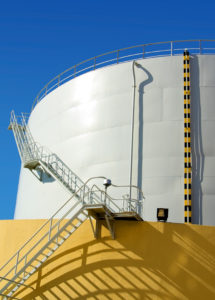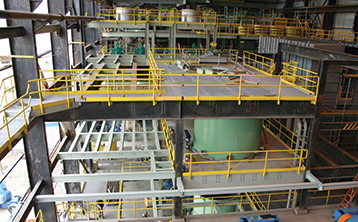Light Structural Steel Solutions
IKG provides light structural channels and rails to properly position landings, stairs and handrail supported to your site specifications. When IKG provides a complete Access Solution, you will receive a complete delivery of matched material that installs the first time without rework at site.
Structural steel is a category of steel used for making construction materials in a variety of shapes. Many structural steel shapes take the form of an elongated beam having a profile of a specific cross section. Structural steel shapes, sizes, chemical composition, mechanical properties such as strengths, storage practices, etc., are regulated by standards in most industrialized countries.
Most structural steel shapes, such as I-beams, have high second moments of area, which means they are very stiff in respect to their cross-sectional area and thus can support a high load without excessive sagging.
Structural steel
Characteristics – Structural steel differs from concrete in its attributed compressive strength as well as tensile strength.
Strength – Having high strength, stiffness, toughness, and ductile properties, structural steel is one of the most commonly used materials in commercial and industrial building construction.
Constructability – Structural steel can be developed into nearly any shape, which are either bolted or welded together in construction. Structural steel can be erected as soon as the materials are delivered on site, whereas concrete must be cured at least 1–2 weeks after pouring before construction can continue, making steel a schedule-friendly construction material.
Fire resistance – Steel is inherently a noncombustible material. However, when heated to temperatures seen in a fire scenario, the strength and stiffness of the material is significantly reduced. The International Building Code requires steel be enveloped in sufficient fire-resistant materials, increasing overall cost of steel structure buildings.[12]
Corrosion – Steel, when in contact with water, can corrode, creating a potentially dangerous structure. Measures must be taken in structural steel construction to prevent any lifetime corrosion. The steel can be painted, providing water resistance. Also, the fire resistance material used to envelope steel is commonly water resistant.[9]
Mold – Steel provides a less suitable surface environment for mold to grow than wood-
The tallest structures today (commonly called “skyscrapers” or high-rise) are constructed using structural steel due to its constructability, as well as its high strength-to-weight ratio. In comparison, concrete, while being less dense than steel, has a much lower strength-to-weight ratio. This is due to the much larger volume required for a structural concrete member to support the same load; steel, though denser, does not require as much material to carry a load. However, this advantage becomes insignificant for low-rise buildings, or those with several stories or less. Low-rise buildings distribute much smaller loads than high-rise structures, making concrete the economical choice. This is especially true for simple structures, such as parking garages, or any building that is a simple, rectilinear shape.
Structural steel and reinforced concrete are not always chosen solely because they are the most ideal material for the structure. Companies rely on the ability to turn a profit for any construction project, as do the designers. The price of raw materials (steel, cement, coarse aggregate, fine aggregate, lumber for form-work, etc.) is constantly changing. If a structure could be constructed using either material, the cheapest of the two will likely control. Another significant variable is the location of the project. The closest steel fabrication facility may be much further from the construction site than the nearest concrete supplier. The high cost of energy and transportation will control the selection of the material as well. All of these costs will be taken into consideration before the conceptual design of a construction project is begun.
Combining steel and reinforced concrete
Structures consisting of both materials utilize the benefits of structural steel and reinforced concrete. This is already common practice in reinforced concrete in that the steel reinforcement is used to provide steel’s tensile strength capacity to a structural concrete member. A commonly seen example would be parking garages. Some parking garages are constructed using structural steel columns and reinforced concrete slabs. The concrete will be poured for the foundational footings, giving the parking garage a surface to be built on. The steel columns will be connected to the slab by bolting and/or welding them to steel studs extruding from the surface of the poured concrete slab. Pre-cast concrete beams may be delivered on site to be installed for the second floor, after which a concrete slab may be poured for the pavement area. This can be done for multiple stories. A parking garage of this type is just one possible example of many structures that may use both reinforced concrete and structural steel.
A structural engineer understands that there are an infinite number of designs that will produce an efficient, safe, and affordable building. It is the engineer’s job to work alongside the owners, contractors, and all other parties involved to produce an ideal product that suits everyone’s needs. When choosing the structural materials for their structure, the engineer has many variables to consider, such as the cost, strength/weight ratio, sustainability of the material, constructability, etc.


